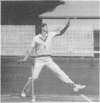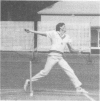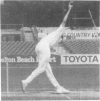Abstract
Eighty-two high performance young male fast bowlers (mean age 16.8 years) were tested immediately prior to the season for selected kinanthropometric and physiological data. Subjects were also filmed both laterally (200 Hz) and from above (100 Hz) while bowling so that their front foot impacted a force platform during the delivery stride. The players then completed a log book over the ensuing season that detailed their training and playing programmes. All cricket related injuries over this season were assessed by a sports physician who used computerized tomography to assist in the diagnosis of spinal injuries. At the completion of this season the players were grouped according to their injury status (Group 1--bony injury to a vertebra; Group 2--soft tissue injury to the back that caused the player to miss at least one game, and Group 3--no injuries). A one-way analysis of variance was used to identify if any variables were significantly (P less than 0.05) different between the three groups, and a Scheffe post hoc comparison was used to determine which groups were significantly different. Eleven per cent of the players sustained a stress fracture to a vertebra(e) (L4 to S1), while 27 per cent sustained a soft tissue injury to the back. Bowlers with a low longitudinal foot arch were more likely to develop a stress fracture than those with a high arch. Shoulder depression and horizontal flexion strength for the preferred limb and quadriceps power in the non-preferred limb were also significantly related to back injuries. Results suggest that bowlers with the above physical characteristics, who bowl with these biomechanical techniques for extended periods, are predisposed to back injuries.
Full text
PDF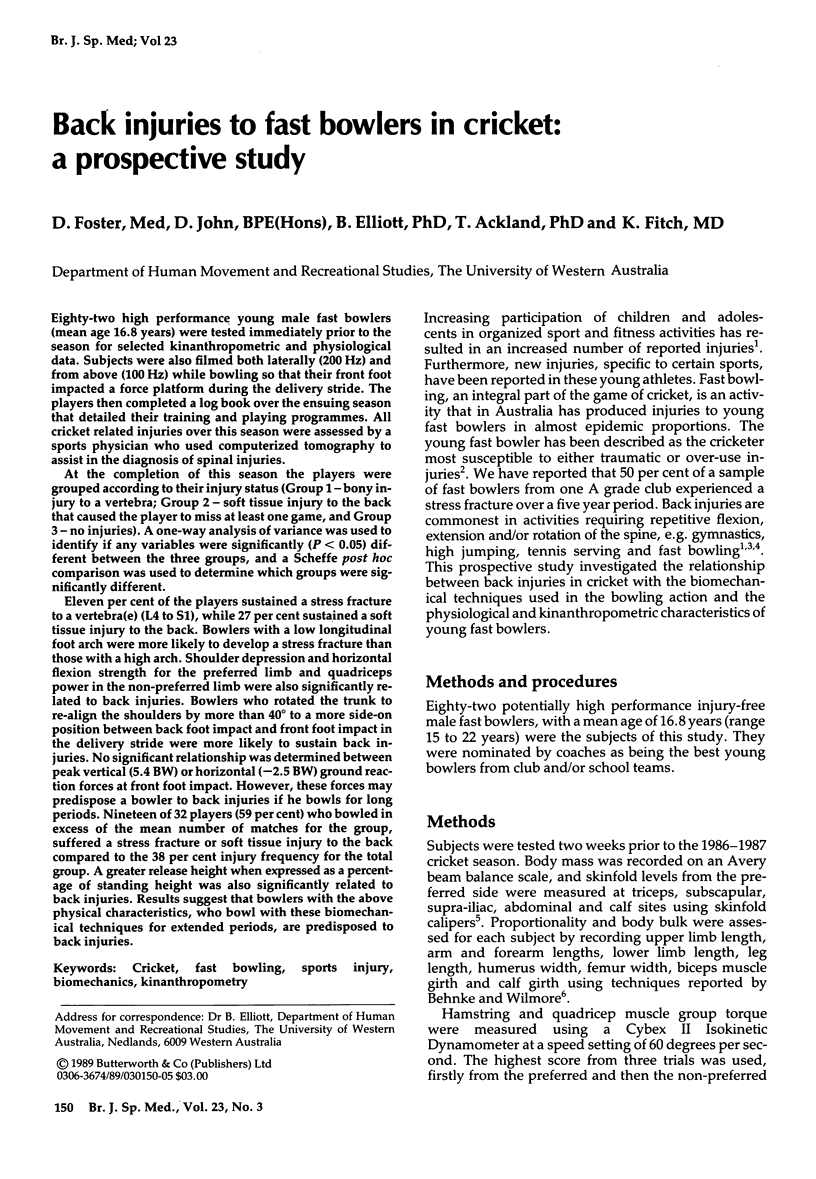


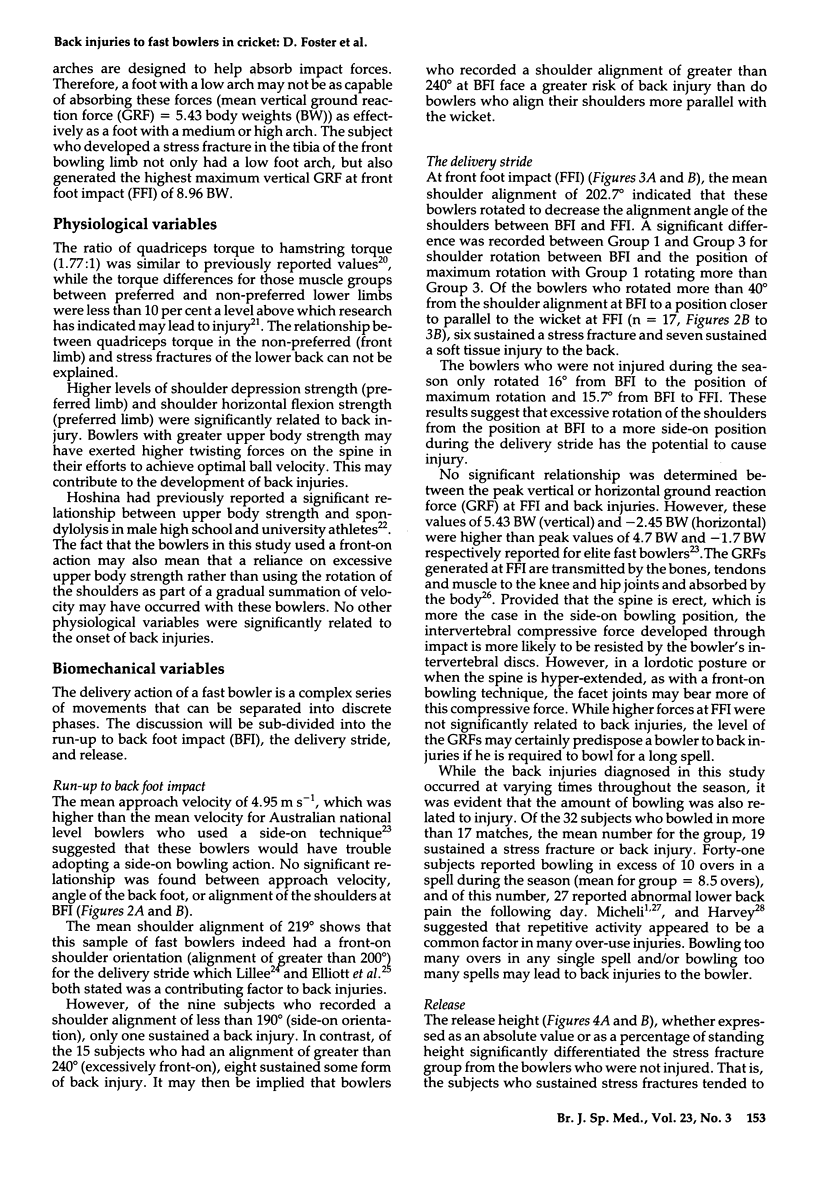
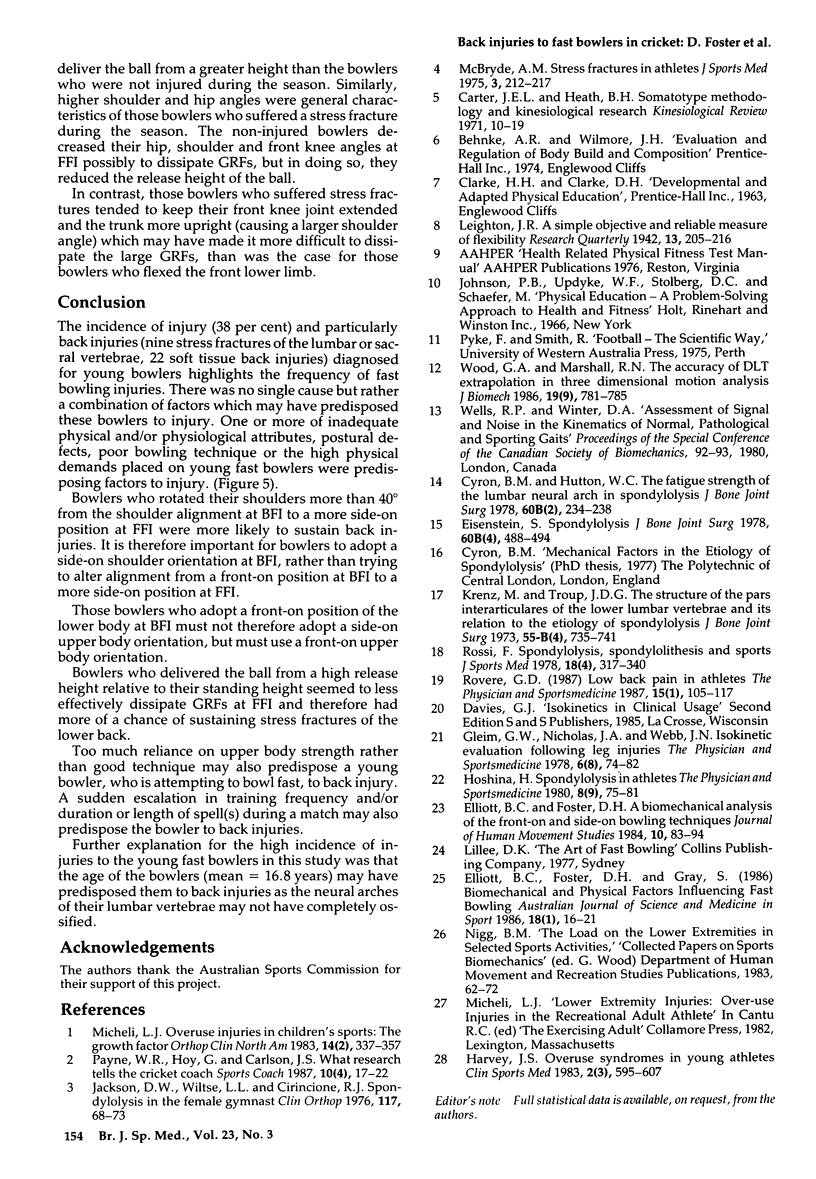
Images in this article
Selected References
These references are in PubMed. This may not be the complete list of references from this article.
- Cyron B. M., Hutton W. C. The fatigue strength of the lumbar neural arch in spondylolysis. J Bone Joint Surg Br. 1978 May;60-B(2):234–238. doi: 10.1302/0301-620X.60B2.659472. [DOI] [PubMed] [Google Scholar]
- Eisenstein S. Spondylolysis. A skeletal investigation of two population groups. J Bone Joint Surg Br. 1978 Nov;60-B(4):488–494. doi: 10.1302/0301-620X.60B4.361744. [DOI] [PubMed] [Google Scholar]
- Harvey J. S., Jr Overuse syndromes in young athletes. Clin Sports Med. 1983 Nov;2(3):595–607. [PubMed] [Google Scholar]
- Jackson D. W., Wiltse L. L., Cirincoine R. J. Spondylolysis in the female gymnast. Clin Orthop Relat Res. 1976 Jun;(117):68–73. [PubMed] [Google Scholar]
- Krenz J., Troup J. D. The structure of the pars interarticularis of the lower lumbar vertebrae and its relation to the etiology of spondylolysis, with a report of a healing fracture in the neural arch of a fourth lumbar vertebra. J Bone Joint Surg Br. 1973 Nov;55(4):735–741. [PubMed] [Google Scholar]
- McBryde A. M., Jr Stress fractures in athletes. J Sports Med. 1975 Sep-Oct;3(5):212–217. doi: 10.1177/036354657500300502. [DOI] [PubMed] [Google Scholar]
- Micheli L. J. Overuse injuries in children's sports: the growth factor. Orthop Clin North Am. 1983 Apr;14(2):337–360. [PubMed] [Google Scholar]
- Rossi F. Spondylolysis, spondylolisthesis and sports. J Sports Med Phys Fitness. 1978 Dec;18(4):317–340. [PubMed] [Google Scholar]
- Wood G. A., Marshall R. N. The accuracy of DLT extrapolation in three-dimensional film analysis. J Biomech. 1986;19(9):781–785. doi: 10.1016/0021-9290(86)90201-0. [DOI] [PubMed] [Google Scholar]




